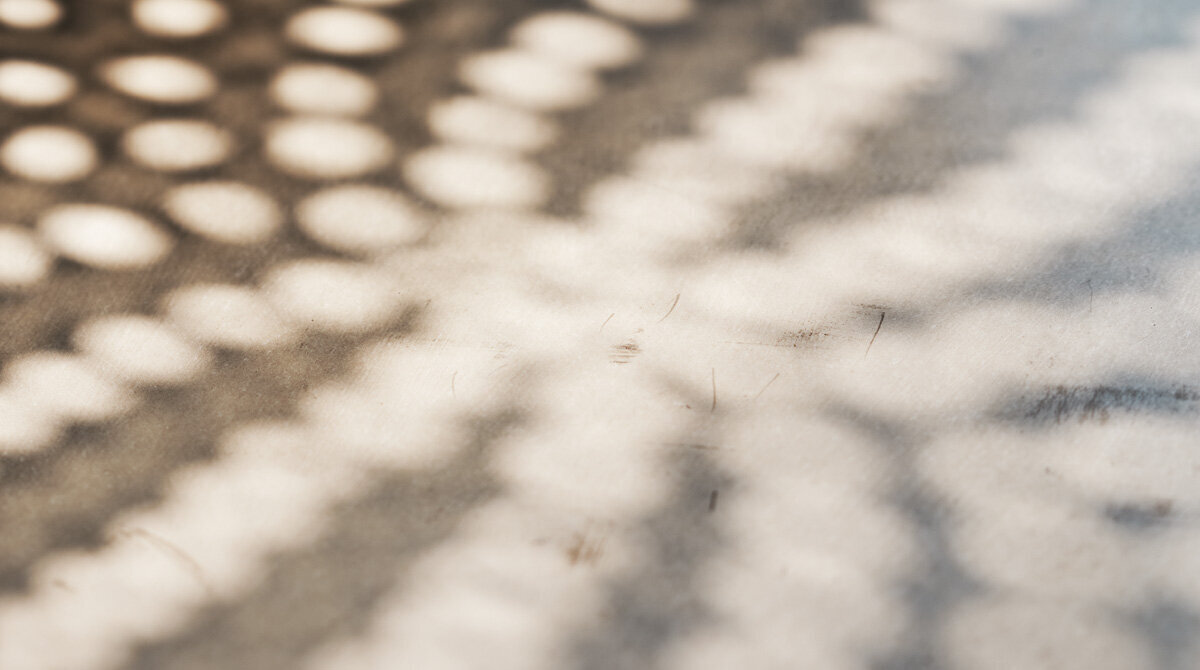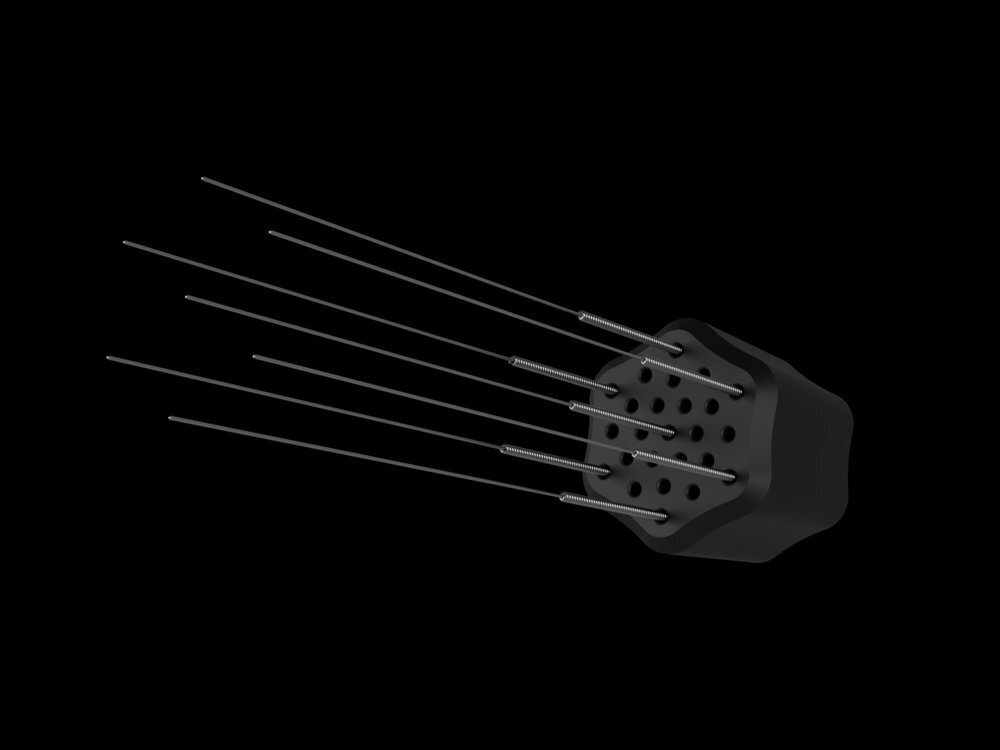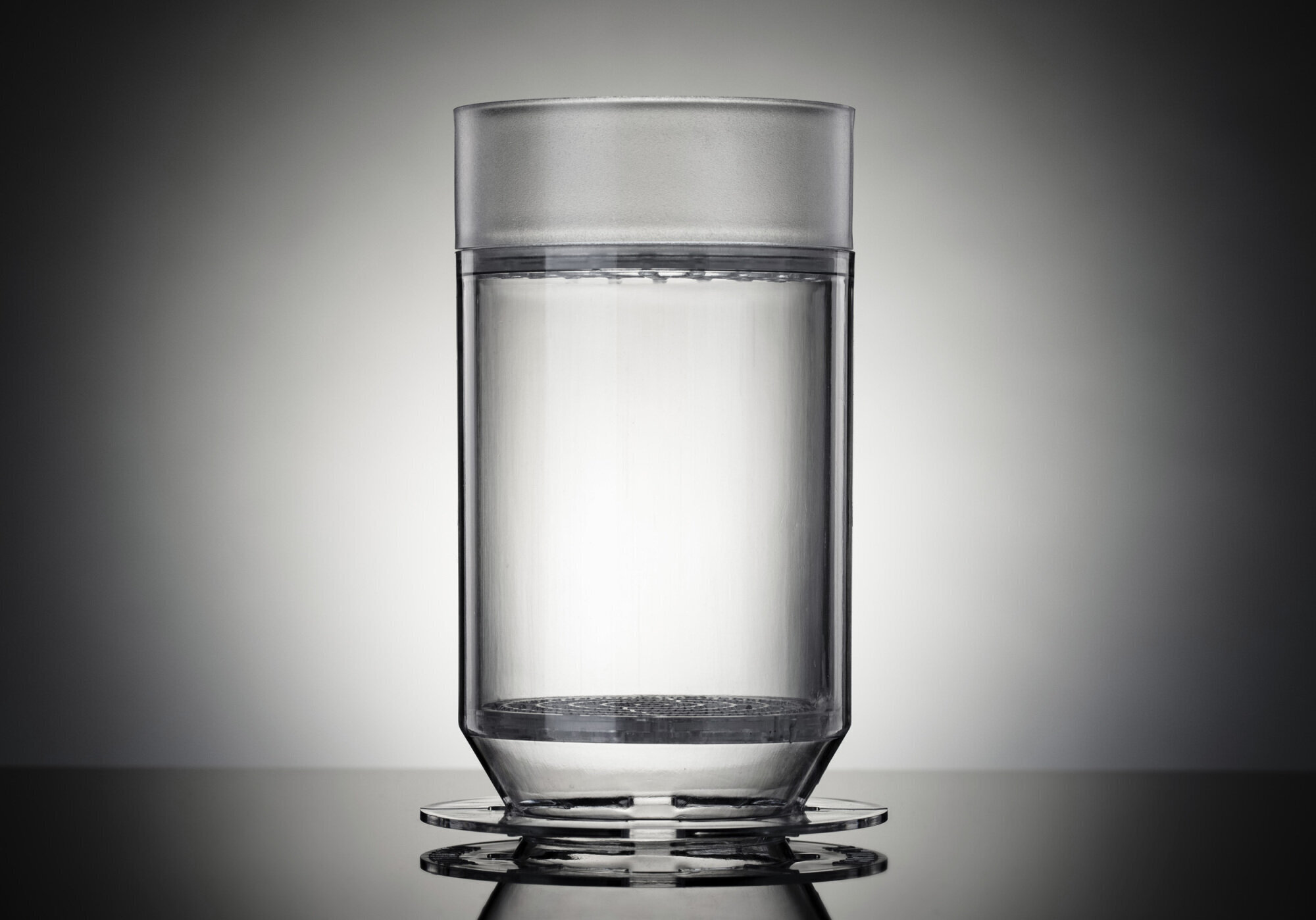
Le Tricolate
BH Unlimited Update, July 4th 2022.
This week we published a long-form interview with Dan Schusett, the inventor of the Tricolate brewer. Dan was very generous with his time and has provided a lot of insight into the creative and manufacturing processes that gave rise to the Tricolate. We get a glimpse at some of Dan’s early prototypes, plus he gives us a look at an antique coffee maker that was part of his inspiration for the Tricolate’s final form. To the best of our knowledge, the Tricolate is the first design of coffee maker by an Australian to achieve any sort of international acclaim and it’s quite different from anything that has come before it.
If you have never seen this device before, it’s a simple design: It is an 80-mm wide cylinder, made of injection moulded Tritan TM plastique. Tritan is a highly transparent, heat resistant and BPA-free plastique. The cylindrical shape of the brewer prevents bypass which has the effect of increasing extraction yields way above the level we can achieve with any other filter coffee maker (with the possible exception of the mighty cezve). In all our tests over the last few weeks, extraction yields have consistently been over 10 percent higher than what we can achieve with any other pour-over device, but often far higher. If you’re not familiar with measuring extraction yields, an average increase of 10% is immense.
To read more about this tip and to get Dan’s own recipe recommendations and a whole lot more, here’s the full interview.
Wet Weiss Distribution
Dan Schusett has not only revolutionised the world of coffee makers, but in this interview he also gave us a pearl of wisdom that we think warrants its own headline: We mentioned to Dan that, with some brews where we were using larger doses of around 30g of coffee, we were having some issues with the coffee bed of our Tricolate not becoming completely saturated during blooming. This was resulting in a few blowouts where the dry grinds suddenly erupted up to the surface.
As experienced pour-over lovers will know, some manual agitation or a Rao spin can usually fix problems like this, but too much agitation can also have the effect of choking the filter paper, resulting in a brew that takes way too long to draw down. This effect was dramatically increased with the Tricolate; lots of manual agitation was choking it up almost permanently.
 The Comb from Outils Barista Hustle .
The Comb from Outils Barista Hustle .
That’s when Dan recommended we try using WDT during blooming — in the wet coffee! Maybe you’ve been doing this for years, but this was the first time we’d ever heard of someone doing this. And I must say, it works as an absolute treat. Only a single pass through the coffee bed with the new BH Comb appeared to completely saturate any dry areas of the coffee bed without adding to the drawdown times. Baristas, you need to give this brew method a try. And you need to read this interview ;D
In case you don’t yet have a Abonnement BH Unlimited , we’ll keep this interview free to read for the next two weeks.
New Course: The Coffee Buyer’s Guide to Colombia
Cette semaine dans Le guide de l'acheteur de café en Colombie we continue our tour of Colombia’s coffee-growing departments with Boyacá and Caldas. Boyacá is a major agricultural department, but only a minor coffee producer, thanks to its thin, clayey soils.
 Coffee growing plantation in Manizales, Caldas
Coffee growing plantation in Manizales, Caldas
Caldas, on the other hand, makes up the northern part of the Eje Cafetero, the coffee-growing heart of Colombia. Coffee-growing in Caldas exploded during the coffee boom in the early twentieth century.
The area under cultivation has been gradually decreasing since the 1990s, but the decline has been offset by increased productivity. Caldas produces more coffee per hectare than anywhere else in Colombia. The most productive municipality, Palestina, produces just over 29 bags of green coffee per hectare — 60% more than the Colombian average, but much less than the most productive areas in Brazil.
Abonnés BH Unlimited avoir un accès avancé à chaque nouveau chapitre au fur et à mesure de la progression de la production.
Science de la torréfaction
Cette semaine dans Science de la torréfaction , we take a look at bean hardness, size, and shape. Hardness is often assumed to be more or less the same as density. In fact, in many coffee grading systems, ‘hard’ is used to refer to high-grown, dense beans.
Physical hardness doesn’t seem to be very closely related to density, however, as physicist-barista Jonathan Gagne showed in his research paper on the BH website . Hardness is closely related to moisture content in the green bean, and has also been linked to ripeness and processing method. However, there is very little research about the hardness of green beans, and it is still a mostly unknown factor in coffee roasting.
 An indentation durometer with rubber blocks for calibration
An indentation durometer with rubber blocks for calibration
Bean size and shape, on the other hand, are well-known to be very important in determining how a coffee roasts. In larger beans, it takes longer for heat to reach the centre of the bean — but this difference is less important in hot-air roasters than in conventional drum roasters.
Large beans are also often assumed to be higher quality, but there is very little science that supports this. Smaller beans are more likely to harbour defects, however, so need more careful sorting after processing.
Une expérience d'apprentissage sans publicité
Chez BH, nous ne faisons jamais de publicité pour les produits d'autres entreprises sur notre site web. Aucun placement de produit n'est effectué dans nos newsletters, nos newsletters ou nos articles de blog. Nos seuls revenus proviennent de vos abonnements. Lorsque vous voyez des machines ou des équipements à café mentionnés dans nos supports pédagogiques ou présentés dans nos vidéos, nous avons choisi de les utiliser parce que nous aimons les utiliser, parce que nous pensons qu'ils ont une importance historique dans l'évolution de la machine à expresso, ou parce qu'ils vous renseignent sur la culture du café moderne. C'est aussi simple que ça.
Science de la torréfaction
Bean Properties
RS 2.04 • Bean Hardness
RS 2.05 • Bean Size and Shape
Le guide de l'acheteur de café en Colombie
Régions en croissance de la Colombie
CBGC 1.04 • Boyacá
CBGC 1.05 • Caldas
Comme toujours, n'hésitez pas à nous contacter par e-mail si vous avez des questions ! Passez une excellente semaine et au plaisir de vous revoir.
Aux frontières du café,
Équipe BH
